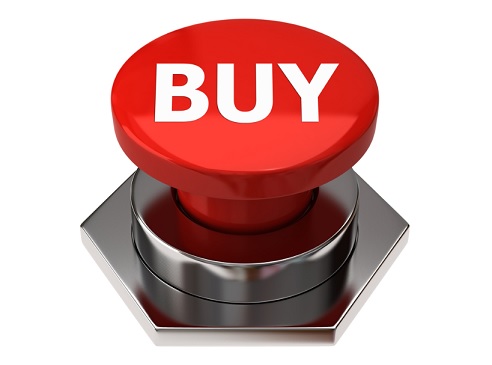Amazon is the undisputed leader in online retail, but Google’s introduction of its own buy button on mobile may give the eCommerce giant something to worry about.
Google’s plan, revealed last week, is to provide buy buttons to those who search for products on mobile devices. Buy buttons will be available to retailers that already pay for Google Product Listing Ads. This is a logical next step after Google’s “mobilegeddon” last month, which included an algorithm change that prioritized mobile-friendly websites in search.
Mobile commerce has long had a conversion rate problem, but Google’s buy button could address a number of the underlying issues. We can all agree that checking out on such a small screen is a hassle, especially when the site isn’t mobile-friendly. Instead of constantly zooming in on descriptions and meticulously tapping links that are smaller than the average fingertip, shoppers often opt out of mobile and complete purchases on a desktop.
Google would end that by directing shoppers to a mobile-friendly and branded site. After clicking, shoppers will have the ability to choose from different sizes, colors, shipping options, and payment options to finish the checkout process without ever leaving Google. Google would store credit card information to make that tedious process a one-time thing. Shoppers would even be able to opt into retailer mailing lists while checking out, sweetening the deal for retailers.
This plan seems to be a win for all but popular marketplaces, like Amazon and eBay. Shoppers will have a seamless and mobile-friendly shopping experience. This will make it easier for retailers to turn around the fact that, according to Marketing Land in Q1 of 2015, 41 percent of traffic came from mobile devices, yet they made up only 26 percent of eCommerce sales. Currently, when shoppers click on sponsored products, they’re taken to the retailer’s website. The load time and mobile-friendliness have a big impact on their likelihood to check out.
Google’s buy button takes control of this process, and a more shoppable experience on Google could keep shoppers from hopping over to Amazon. There are now more reasons for retailers to buy ad space on Google, especially because they don’t have to pay out an additional fee like they would on Amazon or eBay. Google will benefit greatly from the buy button, as it furthers its status as the king of search and a driver in the move towards mobile.
While Google’s addition of a buy button won’t exactly make it a direct competitor to Amazon or eBay, it will be yet another way that the search giant can profit from search and ad revenue. A number of companies are in fierce competition to make the consumer experience easier. The easier it is, the more money they’re able to make.
The real question here is: What will Google do with the data? Some suspect that Amazon uses its sellers’ data against them to offer products at lower prices to dominate its own marketplace. Google’s buy button could be the first step in a foray into the marketplace race for Google, but only time will tell. As of right now, the products shoppers will be able to buy with Google’s buy button will still be sold directly by the retailer. All we know now is that Google could become an even bigger force in online retail very soon by providing an incredible shopping experience all within the most powerful search engine.
Angelica Valentine is the Content Marketing Manager at Wiser, a retail intelligence engine. You can follow her on Twitter here.
VentureBeat's mission is to be a digital town square for technical decision-makers to gain knowledge about transformative enterprise technology and transact. Learn More

